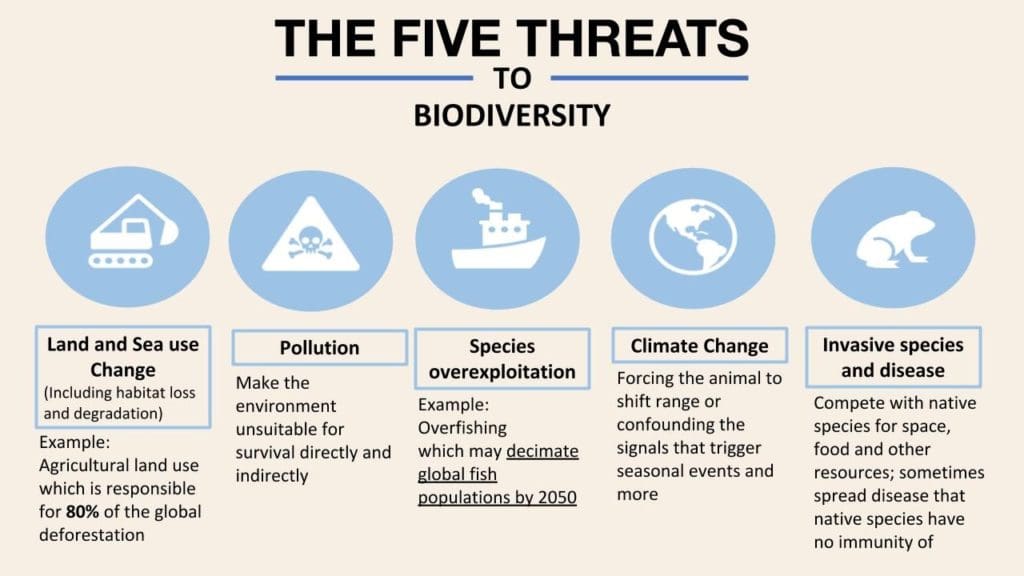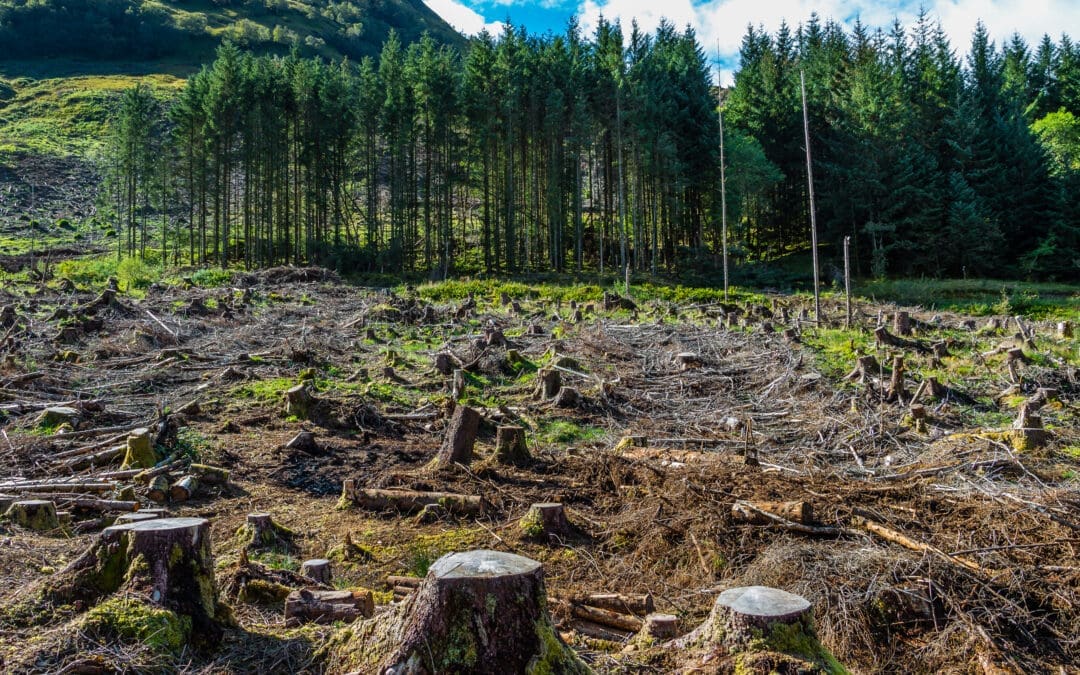Conducting global operations across multi-tier or even single-tier supply chains presents numerous sustainability-related risks and opportunities. Biodiversity loss, in particular, has far-reaching consequences for supply chain sustainability performance due to the dependence of companies on nature. With the establishment of the Taskforce on Nature-related Financial Disclosures (TNFD) in 2021 and the Kunming-Montreal Global Biodiversity Framework (GBF) in 2022, businesses have more guidance in setting sustainability goals and targets as well as increased motivations to reverse and prevent loss of biodiversity. Although addressing this challenge entails a steep learning curve for implementing the necessary changes, SupplyShift is here to guide you on your sustainability journey toward positive impact.
In this blog, we’ll explore:
- The importance of biodiversity
- Business implications of biodiversity loss
- Resources and guidance for compliance
- Evaluating and prioritizing relevant biodiversity issues
- Technologies and tools to support your efforts
- The role of innovation in creating nature-based solutions
What is biodiversity, and why is biodiversity important to business?
Biodiversity encompasses a variety of plant, animal, fungi, and microbial species that form intricate ecosystems. It is vital for maintaining food systems, soil health, medical innovations, and even climate stability. However, human activities, such as unsustainable resource consumption and sourcing practices, have disrupted this delicate balance.
Strategic sustainability planning must account for the risks associated with the loss of biodiversity and measure its economic impact on businesses. For instance, clearing acres of trees for agricultural or mining purposes may initially satisfy increasing demands, but it also heightens the likelihood of severe droughts, loss of native pollinators, and other detrimental consequences. In fact, biodiversity loss could soon surpass climate change as the most significant risk in the coming years.

Source: Living Planet Report 2020, WWF.
Business Implications of Biodiversity Loss
Every business, regardless of size or sector, has a part to play in addressing the loss of biodiversity. Even companies with fully remote operations and no physical goods can both impact and be affected by changes in biodiversity in the regions where they operate. Similar to carbon emissions, understanding a company’s biodiversity impact requires examining direct operations, the supply chain, and the broader landscape.
Research highlights the critical interplay between business prosperity and biodiversity conservation. According to data from the World Economic Forum, half of the world’s GDP either moderately or highly depends on nature. Meanwhile, the IPBES Report reveals that, on average, natural ecosystems have already declined by 47% compared to their earliest estimated states.
Beyond the economic benefits of conserving Earth’s diverse organisms, the call for action from consumers, customers, employees, and investors has grown considerably louder. Incorporating ecosystems and nature’s contribution into decision making for ingredients, products, and throughout the supply chain enhances the ability to sustainably produce goods and provide services well into the future.
Moreover, embracing biodiversity constraints can inspire innovation, leading to new business models and opportunities for transformative growth. Nature-based solutions not only ensure compliance but also drive sustainable scalability, fostering long-term business resilience.
Assessing Impact and Establishing a Baseline
Although tackling biodiversity loss may seem daunting for teams already inundated with various sustainability demands, there are some steps businesses can start to take now:
1. Engage executives and board members by helping them understand the issue and its impact on the company.
A double materiality assessment can reveal the effects of nature on the business and vice versa. Gaining leadership endorsement will facilitate easier measurement, management, and reporting of progress.
2. Assess the quality of data systems to ensure accurate tracking and reporting of biodiversity-related information.
To obtain a comprehensive view of value chains, businesses must exchange information on policies, practices, and more. This information, however, is often difficult to access, decentralized, and prone to inaccuracies. Addressing these data needs is crucial to making progress without disrupting operations.
3. Allocate dedicated resources for measuring and reducing biodiversity loss.
It’s still common to see responsible procurement and other sustainability-related functions as secondary responsibilities for a lone individual at a company, which is not scalable. Allocating budgets and identifying key personnel for sustainability efforts now will yield compounded benefits when government and trade regulations intensify and become obligatory.
4. Integrate biodiversity and nature-focused goals into decision-making processes for revenue operations.
This approach adds another layer of cohesion to reduction efforts and ensures that biodiversity considerations become an integral part of the company’s strategic planning, fostering innovation and new opportunities for sustainable growth.
Guidance for Compliance and Leading Reduction Efforts
Compliance with financial disclosures, both required and voluntary, is an additional incentive for allocating budget and resources to combat the loss of biodiversity. With over 100,000 natural areas now protected in the fight against biodiversity decline, both local communities and government bodies are recognizing the urgency of the issue.
The TNFD is developing a framework to provide structure and guidance for businesses embarking on their biodiversity journey. TNFD’s LEAP – the risk and opportunity assessment approach – can be used as a guide to help organizations identify and address nature-related risks and opportunities.
While TNFD currently offers voluntary disclosure guidance, mandatory adoption is likely on the horizon as the metrics behind deforestation and biodiversity loss become standardized. Unlike climate reporting, where CO2e (carbon dioxide equivalent) is a key measurement and reduction metric, biodiversity attributes are more diverse and site-specific. The Science Based Targets Network (SBTN) enables target-setting for nature and integrates with the Science Based Target Initiative (SBTi).
TNFD is not the only available source of guidance. Several organizations are hard at work creating simplified solutions for businesses to access data insights. As more resources become available, the question now is: How can businesses effectively integrate them into their daily operations?
Leveraging Technology for Sustainability: A New Tool on the Horizon
Engaging with suppliers can be done through manual processes or expedited with the use of technology. In the first instance, a goods manufacturer can choose to manually aggregate supplier locations, construct surveys about the applicable biodiversity risks, and email their suppliers individually. This method, however, is inefficient and error-prone, making it likely to affect the efficacy of the overall program in the eyes of internal members.
Sustainable supply chain software can help organizations streamline supplier engagement, improving the efficiency and reliability of data collection and reporting, while also providing value to suppliers through capacity building. Tools with regular release cycles, such as SupplyShift, lower the barrier to entry for businesses and their suppliers, making sustainability an achievable goal for all.
Together with our partner, Pure Strategies, we have developed a tech-enabled and expert-built Biodiversity Assessment tool that aligns with global frameworks, like the TNFD, to enhance data collection and reporting. The assessment helps businesses navigate the evolving landscape of biodiversity reporting and accountability, encouraging the development of innovative, nature-based solutions that aid in restoring and preserving biodiversity.

Understanding the importance of biodiversity and recognizing the consequences of its loss is a critical first step toward meaningful change. Equipped with this knowledge, along with available resources and guidance, companies can effectively evaluate, prioritize, and address material issues. The use of innovative technologies and strategies can ensure not only regulatory compliance but also open doors to transformative growth and sustainable business models.
As we work to further develop supporting tools and resources, the future of supply chains will undoubtedly become more closely aligned with biodiversity preservation. Our shared vision should be to foster supply chains that not only respect but actively promote the incredible diversity of life on our planet.
Want to learn more about our Biodiversity Assessment? Contact us, and our team will be happy to answer any questions you may have.
Found this content helpful? Follow us for more!



